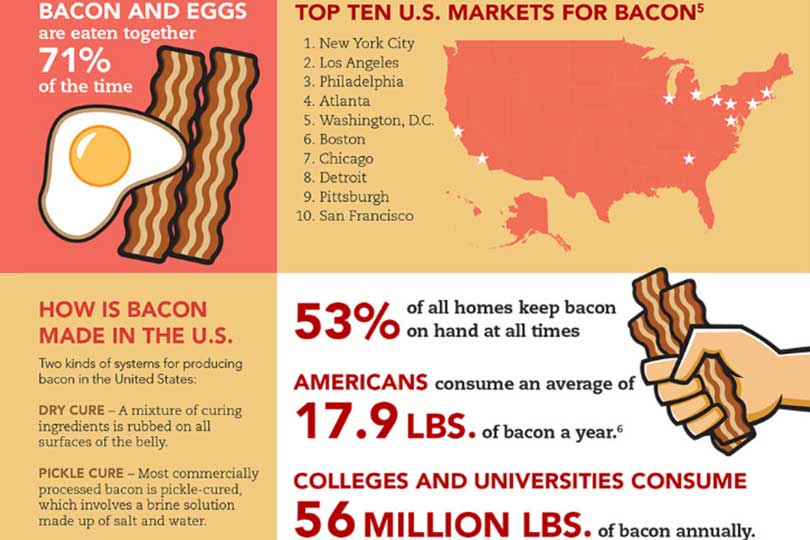Jennifer Dorsett
Field Editor
Pork bellies have risen to a sizzling hot commodity in the past several years.
American consumption of bacon, which is smoked and cured pork belly, has increased 2.4 percent from 2001 to 2013. Americans now eat an average of 17.9 pounds of bacon every year.
But it’s not just for breakfast anymore.
And on Dec. 30, meat lovers across the U.S. celebrate National Bacon Day.
“Bacon has definitely moved beyond the breakfast table,” said Ray Riley, director of the Texas A&M University Rosenthal Meat Science and Technology Center. “It’s because everything tastes better with bacon.”
The Rosenthal Meat Science and Technology Center, located in College Station, conducts teaching and research and hosts a retail meat store. While the university’s animal science department traditionally supplies the retail store with product raised on the university’s farm, it now must supplement with purchased pork bellies to keep enough in stock year-round, Riley noted.
According to U.S. Department of Agriculture (USDA) retail reports, sliced bacon averaged $5.50 per pound in November this year. It was $5.79 per pound in November 2018 and $5.70 per pound in 2017. Prices have remained relatively stable, Texas A&M AgriLife Extension Service Meat Specialist Dr. Davey Griffin said.
“It’s amazing what pork bellies have done in the last several years,” Griffin said. “They’ve outpaced every other pork product and become the most valuable cut. Even when we see rises in belly prices, the public takes it in stride because they want their bacon.”
Griffin said pork bellies are the most in-demand cuts, edging out cuts traditionally graded by USDA for marketing purposes such as loins, Boston butts and picnic shoulders.
“It’s interesting that pork bellies didn’t register that high on the list of cuts for so long, and now bacon is king,” Griffin said. “It is hands-down the top pork product.”
The National Pork Board reports 53 percent of U.S. homes always keep bacon on hand, and about 18 percent of all U.S. in-home pork consumption is bacon.
China’s African swine fever outbreak isn’t causing a shortage in the U.S., AgriLife Extension experts noted. The U.S. sends a variety of pork cuts to China, but traditionally, pork bellies haven’t been a top seller. Smithfield, a large pork-producing company in the U.S., has started exporting whole carcasses to China, which includes the pork belly. However, AgriLife Extension experts said it’s not enough to fuel a shortage.

